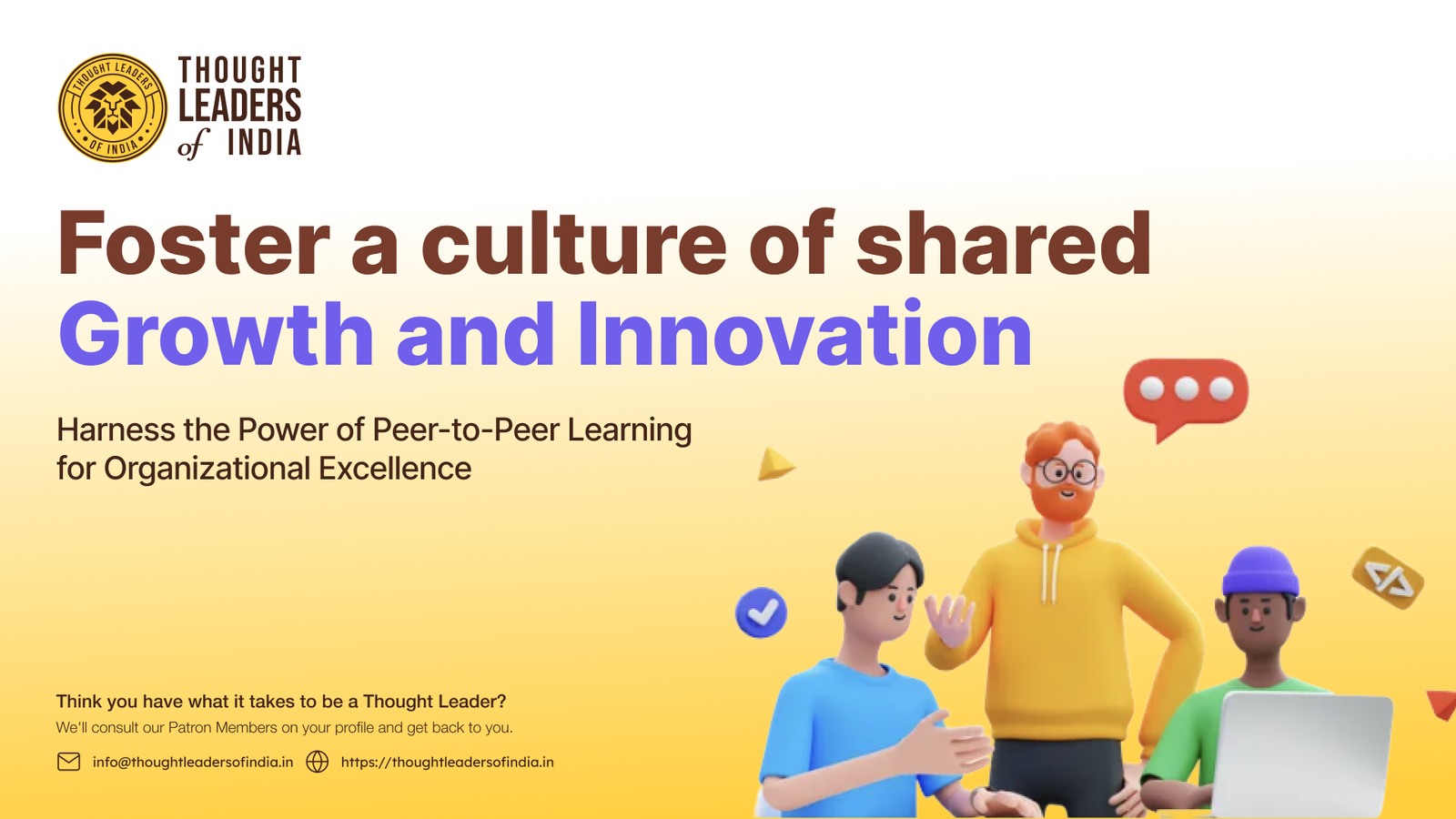In today’s fast-paced and ever-evolving business landscape, traditional learning methods often fall short of meeting the dynamic needs of organizations. Enter peer-to-peer learning – a powerful approach that is reshaping the way we think about professional development. Imagine a workplace where knowledge flows seamlessly among colleagues, where every interaction is an opportunity to learn and grow. This is the essence of peer-to-peer learning, and it’s gaining momentum across the globe. Picture this: an employee in Mumbai shares a breakthrough idea with a colleague in New York, who then applies it to solve a pressing challenge. This exchange not only boosts the individual’s capabilities but also propels the entire organization forward. Peer-to-peer learning is about more than just knowledge transfer; it’s about creating a culture of continuous improvement and collaboration.
Studies from India and around the world underscore the benefits of this approach. According to a survey by the Corporate Executive Board, employees who engage in peer-to-peer learning are 50% more likely to perform at a higher level. In a rapidly changing business environment, staying ahead requires harnessing the collective intelligence of your team.


The Power of Peer-to-Peer Learning
Peer-to-peer learning involves individuals at similar levels of expertise and experience sharing knowledge and skills with each other. This approach leverages the collective intelligence of employees, fostering a culture of continuous learning and innovation. Unlike traditional top-down training programs, peer-to-peer learning is dynamic, interactive, and highly engaging.
Picture two colleagues, both experts in their fields, sharing insights over a cup of coffee or during a casual brainstorming session. They exchange knowledge and skills, tapping into the collective intelligence of their team. This approach transforms the workplace into a dynamic learning environment, where innovation thrives and continuous improvement is the norm. Unlike traditional top-down training programs, peer-to-peer learning is lively, interactive, and deeply engaging, making every conversation a potential game-changer for the entire organization.
Benefits of Peer-to-Peer Learning
- Enhanced Knowledge Retention – Studies have shown that people retain 90% of what they learn when they teach others, compared to just 5% through lectures and 10% through reading (National Training Laboratories, Bethel, Maine). By encouraging employees to share their expertise, organizations can significantly enhance knowledge retention.
- Fostering a Collaborative Culture – Peer-to-peer learning breaks down silos within organizations, promoting a collaborative culture. Employees are more likely to work together, share ideas, and support each other’s growth, leading to improved team dynamics and productivity.
- Empowerment and Engagement – When employees are given the opportunity to lead learning sessions and share their insights, they feel valued and empowered. This sense of ownership and recognition boosts engagement and motivation, driving better performance and job satisfaction.
- Cost-Effective Learning Solution – Traditional training programs can be expensive and time-consuming. Peer-to-peer learning, on the other hand, leverages existing resources within the organization, making it a cost-effective solution for continuous learning and development.
- Adaptability and Relevance – Peer-to-peer learning is highly adaptable to the specific needs and challenges of an organization. Employees can share real-time insights and practical solutions that are immediately relevant to their peers, ensuring that learning is always aligned with the organization’s goals.
Statistics and Examples of Peer-to-Peer Learning
- According to a survey by LinkedIn Learning, 94% of employees in India believe that they would stay at a company longer if it invested in their learning and development. Additionally, a report by KPMG India highlights that organizations with strong learning cultures are 92% more likely to innovate.
- A global study by Bersin & Associates found that companies with strong learning cultures are 46% more likely to be first to market, 58% more prepared to meet future demand, and 17% more likely to be market share leaders.
- IBM’s “Think Academy” is a peer-to-peer learning platform that allows employees to create and share content with their peers. This initiative has led to a significant increase in employee engagement and has fostered a culture of continuous learning and innovation within the organization.
- Google’s g2g program encourages employees to teach each other various skills, from coding to public speaking. This initiative has been instrumental in maintaining Google’s culture of knowledge sharing and innovation.
Conclusion
Imagine a workplace where every conversation sparks innovation, every shared experience fuels growth, and every employee feels deeply engaged. This is the power of peer-to-peer learning. It’s more than just a tool—it’s a catalyst for organizational excellence. By embracing this approach, you can drive significant growth, boost employee engagement, and nurture a culture of continuous learning. Now, picture yourself as part of the TLOI COMMUNITY, where industry leaders come together to share insights, solve challenges, and inspire each other. Here, you’re not just learning from the best; you’re becoming one of the best. Don’t miss out on this incredible opportunity to propel yourself and your organization to new heights. Join us at TLOI, where the future of learning and innovation is being shaped every day. Let’s learn, share, and grow together.
Sources:
– National Training Laboratories, Bethel, Maine
– LinkedIn Learning Report
– KPMG India Report
– Bersin & Associates Global Study

